| name | photos | - |
Nagoya Kiri-Tansu (Paulownia Chest) Asigned for National Traditional Crafts |
It is said that the making of Nagoya Kiri-Tansu started approx. 400 years
ago, when carpenters were gathered from all over the country to build Nagoya Castle. After the construction, they settled down in the castle town. |
|
| Nagoya Yuuzen (dyed cloth) Asigned for National Traditional Crafts |
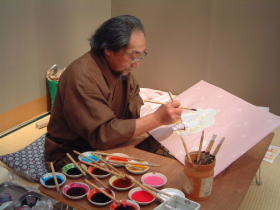 |
- |
| Shippo (cloisonné/enamelware) Asigned for National Traditional Crafts |
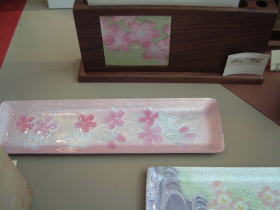 |
- |
Arimatsu Narumi Shibori (tie-dye) Asigned for National Traditional Crafts |
- | |
Kuromontsuki-zome Asigned for National Traditional Crafts |
- | |
| Nagoya Sensu (fan) |
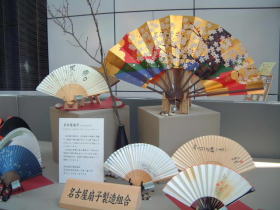 |
Nagoya Sensu fan was started in the middle of 18th century by Mr. Inoue Kanzo and his son who moved to Habashita in Nishi-ku from Kyoto. In Kyoto they mainly produce high quarity fans for women. In Nagoya, they have been mainly producing fans suitable for practical use for men. 末廣堂 〒451-0043 名古屋市西区新道1-20-14 TEL: 052-562-2267 Official website is here. |
Nagoya Sekku Ningyo (Dolls for the seasonal festivals like girls festival on Mar. 3 and Children'd Day on May 5th) |
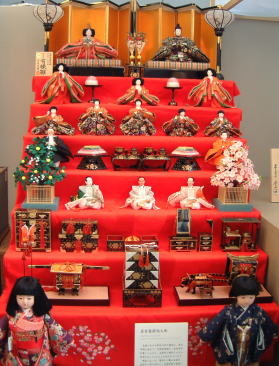 |
According Industrial statistics in 2005, the Sekku doll shipments in Aichi Prefecture (mainly Nagoya and Takahana C/18 companies.) consisted of 1.138 billion yen (the 3rd), follows after Saitama Pref.(6.3 billion yen) and Okayama Pref. (1.259 billion yen)/ |
| Chochin lanterns made of paper and bamboo |
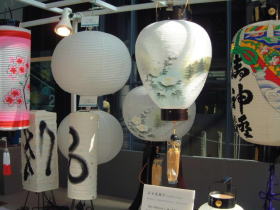 |
- |
| Ki-oke wooden tub |
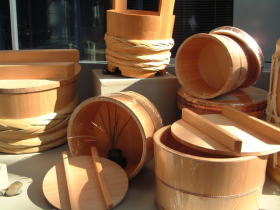 |
In the Edo Era, wooden tubs were produced by using of Kiso-Sawara (a kind of cypress grown in Kiso area) planted in the Owari Clan's territory. 水谷桶製造店/Mizutani Oke seizoten 〒460-8501 瑞穂区新開町3-1 TEL: 052-881-7816 |
| Hakimono and Hanao (footwear) |
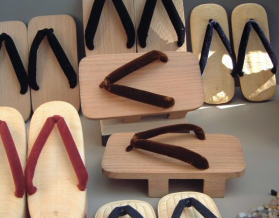 |
- |
Tsuge-gushi (Comb) |
|
Real tsuge-gushi comb is very good for our head skin. All the combs used in the sumo world are made by Kushitome-Shoten in Nagoya. 櫛留商店/Kushitome Shoten 〒462-0059 名古屋市北区駒止町1-60 TEL: 052-991-3759 Official website is here |
| Wa-rosoku (Japanese candle) |
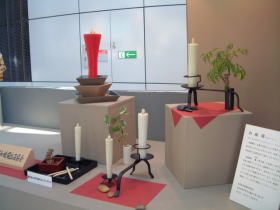 |
Wa-rosoku (wa/Japan, rosoku/candle) Warosoku is made from wax taken from fruits of haze (Sumac or wax tree) |
Wagashi (Japanese style confectionery) |
(This is called kohgei-gashi/edible but for ornamental use) Wagashi production became popular with prosperity of tea ceremony. Kyoto, Kanazawa, Matsue, Tokyo and Nagoya are famous with "Jonamagashi" which served with tea. Each Jonamagashi has it's own name. I think it's very difficult to understand the meaning of each name, so please guess what it shows. We enjoy its color, figure, cut end surface and guess a scene of the season. Jonamagashi is a scenic art of four seasons. |
|
| Nagoya Butsudan (Nagoya style Buddhist altar) Asigned for National Traditional Crafts |
- |